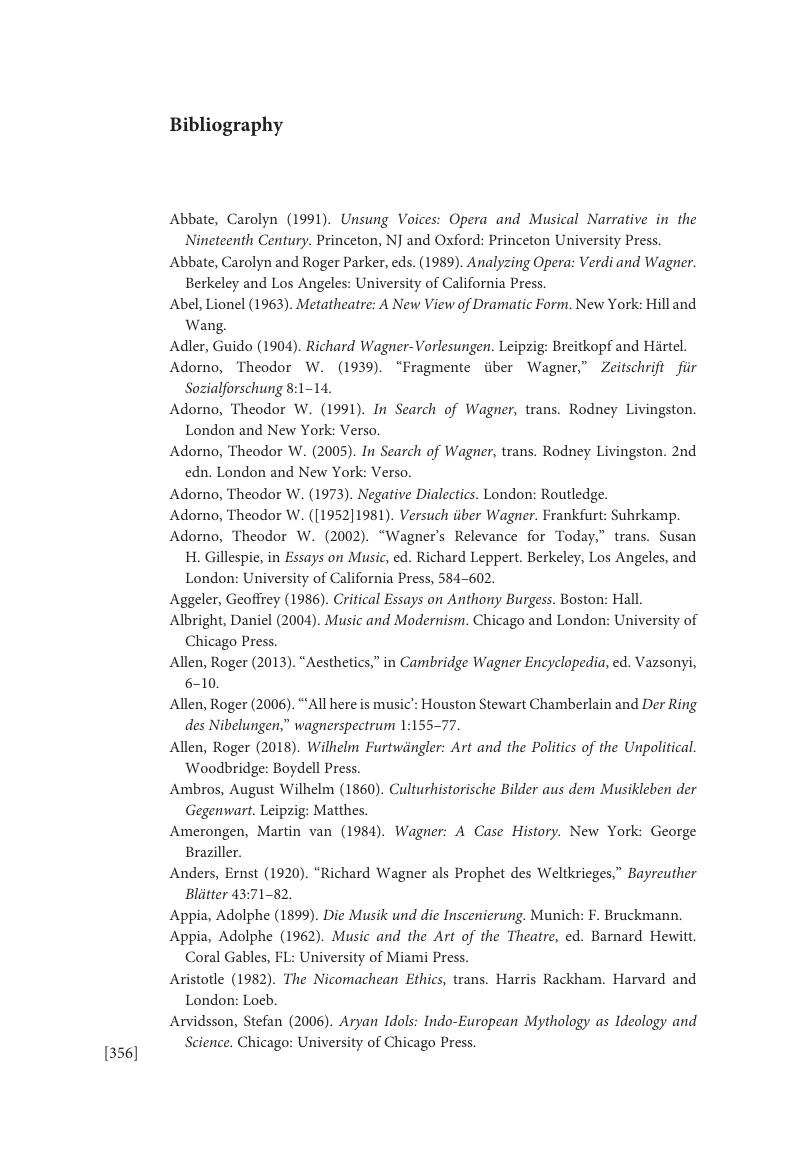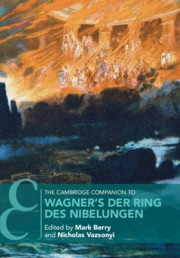Book contents
- The Cambridge Companion to Wagner’s Der Ring des Nibelungen
- Cambridge Companions to Music
- The Cambridge Companion to Wagner’s Der Ring des Nibelungen
- Copyright page
- Contents
- Figures
- Music Examples
- Contributors
- Preface
- Abbreviations
- Introduction
- Part I Myth
- Part II Aesthetics
- Part III Interpretations
- Part IV Impact
- Bibliography
- Index
- References
Bibliography
Published online by Cambridge University Press: 18 September 2020
- The Cambridge Companion to Wagner’s Der Ring des Nibelungen
- Cambridge Companions to Music
- The Cambridge Companion to Wagner’s Der Ring des Nibelungen
- Copyright page
- Contents
- Figures
- Music Examples
- Contributors
- Preface
- Abbreviations
- Introduction
- Part I Myth
- Part II Aesthetics
- Part III Interpretations
- Part IV Impact
- Bibliography
- Index
- References
Summary

- Type
- Chapter
- Information
- The Cambridge Companion to Wagner's Der Ring des Nibelungen , pp. 356 - 379Publisher: Cambridge University PressPrint publication year: 2020



